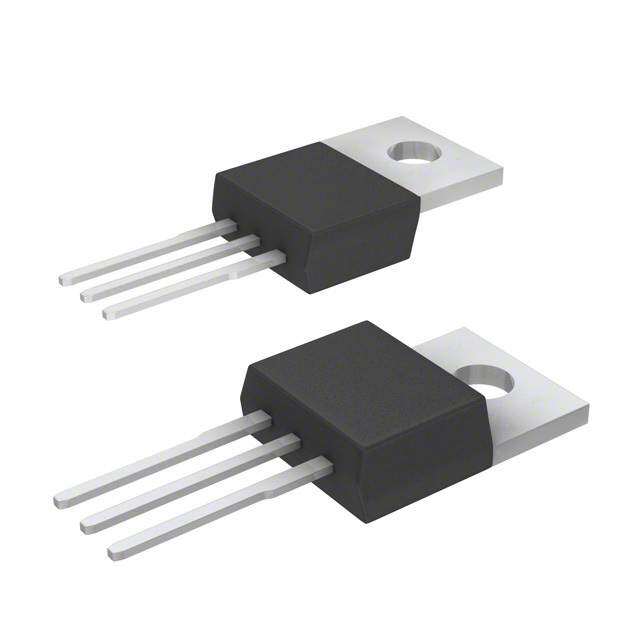ICGOO在线商城 > 集成电路(IC) > PMIC - 稳压器 - 线性 > TPS79850QDGNRQ1
- 型号: TPS79850QDGNRQ1
- 制造商: Texas Instruments
- 库位|库存: xxxx|xxxx
- 要求:
| 数量阶梯 | 香港交货 | 国内含税 |
| +xxxx | $xxxx | ¥xxxx |
查看当月历史价格
查看今年历史价格
TPS79850QDGNRQ1产品简介:
ICGOO电子元器件商城为您提供TPS79850QDGNRQ1由Texas Instruments设计生产,在icgoo商城现货销售,并且可以通过原厂、代理商等渠道进行代购。 TPS79850QDGNRQ1价格参考。Texas InstrumentsTPS79850QDGNRQ1封装/规格:PMIC - 稳压器 - 线性, Linear Voltage Regulator IC Positive Fixed 1 Output 5V 50mA 8-MSOP-PowerPad。您可以下载TPS79850QDGNRQ1参考资料、Datasheet数据手册功能说明书,资料中有TPS79850QDGNRQ1 详细功能的应用电路图电压和使用方法及教程。
TPS79850QDGNRQ1是Texas Instruments(德州仪器)生产的PMIC(电源管理集成电路),属于线性稳压器类别。该型号的主要应用场景包括: 1. 汽车电子系统 TPS79850QDGNRQ1广泛应用于汽车电子领域,特别是在需要高可靠性和稳定性的场景中。它能够为汽车中的各种模块提供稳定的电源电压,如: - 车身控制模块(BCM):用于控制车窗、门锁、灯光等。 - 信息娱乐系统:为车载音响、导航系统等提供稳定的电源。 - 传感器模块:为各类传感器(如温度、压力、速度传感器)供电,确保其正常工作。 2. 工业控制系统 在工业自动化和控制系统中,TPS79850QDGNRQ1可以为PLC(可编程逻辑控制器)、伺服驱动器、传感器和其他关键组件提供稳定的电源。其低噪声和高精度的输出特性使得它特别适合对电源质量要求较高的工业应用。 3. 通信设备 在通信基础设施中,TPS79850QDGNRQ1可用于为基站、路由器、交换机等设备中的敏感电路供电。它的高效能和低功耗特性有助于提高系统的整体性能和可靠性。 4. 医疗设备 TPS79850QDGNRQ1也适用于医疗设备,如监护仪、超声波设备、便携式医疗仪器等。这些设备通常需要非常稳定的电源来确保测量结果的准确性,并且对电源的噪声和波动非常敏感。TPS79850QDGNRQ1的低噪声和高稳定性正好满足这些需求。 5. 消费电子产品 虽然主要针对工业和汽车市场,TPS79850QDGNRQ1也可以用于某些高端消费电子产品,如智能手表、平板电脑等,特别是在需要高精度电源管理和低功耗的应用中。 6. 航空航天与国防 在航空航天和国防领域,TPS79850QDGNRQ1可以为卫星、无人机、导弹等设备中的关键电子组件提供可靠的电源。其宽温度范围和高可靠性使其能够在极端环境下保持稳定工作。 总之,TPS79850QDGNRQ1凭借其高精度、低噪声、宽输入电压范围和高可靠性,成为多个领域的理想选择,尤其适用于对电源质量要求极高的应用场景。
| 参数 | 数值 |
| 产品目录 | 集成电路 (IC)半导体 |
| 描述 | IC REG LDO 5V 50MA 8MSOP低压差稳压器 Auto Cat 50mA 3V-50V MicroPwr |
| 产品分类 | |
| 品牌 | Texas Instruments |
| 产品手册 | |
| 产品图片 |
|
| rohs | 符合RoHS无铅 / 符合限制有害物质指令(RoHS)规范要求 |
| 产品系列 | 电源管理 IC,低压差稳压器,Texas Instruments TPS79850QDGNRQ1- |
| 数据手册 | |
| 产品型号 | TPS79850QDGNRQ1 |
| 产品目录页面 | |
| 产品种类 | 低压差稳压器 |
| 供应商器件封装 | 8-MSOP-PowerPad |
| 其它名称 | 296-24323-1 |
| 包装 | 剪切带 (CT) |
| 商标 | Texas Instruments |
| 回动电压—最大值 | 150 mV at 1 mA |
| 安装类型 | 表面贴装 |
| 安装风格 | SMD/SMT |
| 封装 | Reel |
| 封装/外壳 | 8-TSSOP,8-MSOP(0.118",3.00mm 宽)裸焊盘 |
| 封装/箱体 | HVSSOP-8 |
| 工作温度 | -40°C ~ 125°C |
| 工厂包装数量 | 2500 |
| 最大功率耗散 | 1.83 W |
| 最大工作温度 | + 125 C |
| 最大输入电压 | 50 V |
| 最小工作温度 | - 40 C |
| 最小输入电压 | - 65 V |
| 标准包装 | 1 |
| 电压-跌落(典型值) | 0.3V @ 50mA |
| 电压-输入 | 最高 50V |
| 电压-输出 | 5V |
| 电压调节准确度 | 1.5 % |
| 电流-输出 | 50mA |
| 电流-限制(最小值) | 60mA |
| 稳压器拓扑 | 正,固定式 |
| 稳压器数 | 1 |
| 系列 | TPS79850-Q1 |
| 线路调整率 | 15 mV |
| 负载调节 | 50 mV |
| 输入偏压电流—最大 | 0.04 mA |
| 输出电压 | 5 V |
| 输出电流 | 50 mA |
| 输出端数量 | 1 Output |
| 输出类型 | Adjustable |


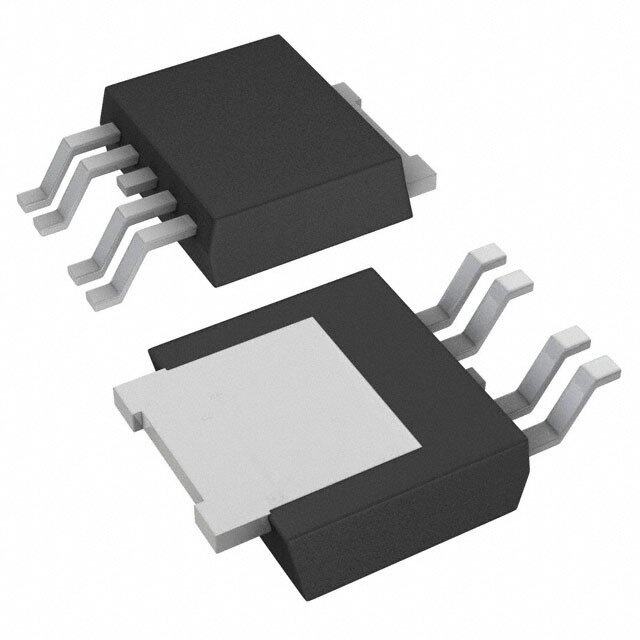


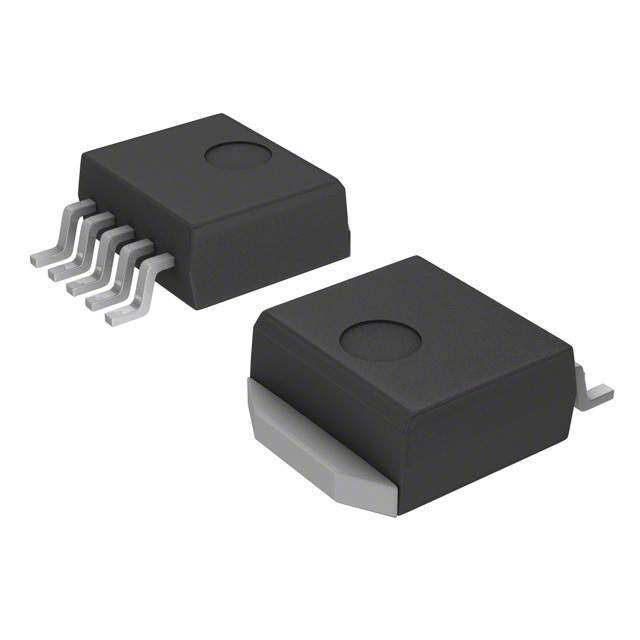

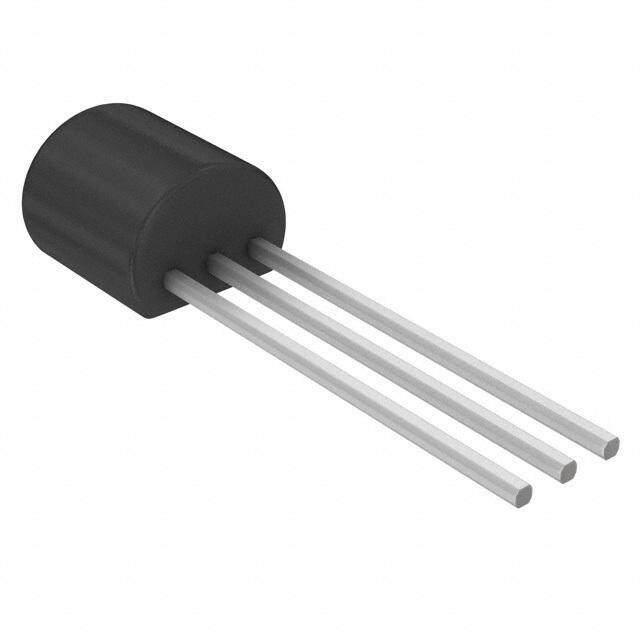
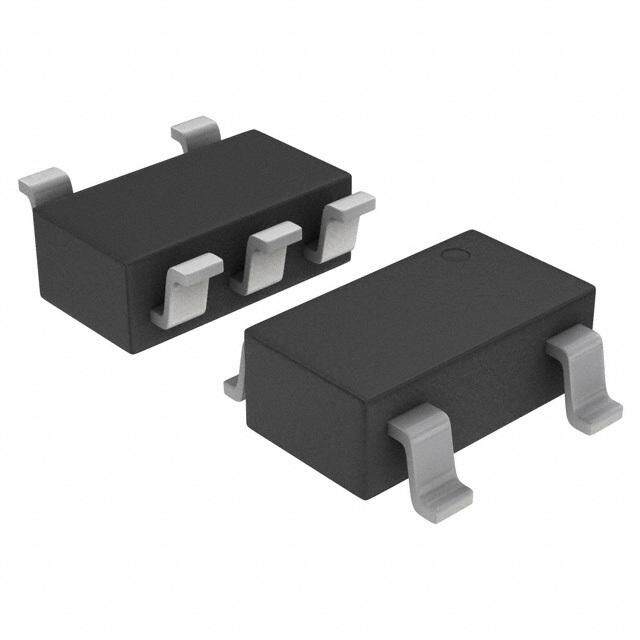

- 商务部:美国ITC正式对集成电路等产品启动337调查
- 曝三星4nm工艺存在良率问题 高通将骁龙8 Gen1或转产台积电
- 太阳诱电将投资9.5亿元在常州建新厂生产MLCC 预计2023年完工
- 英特尔发布欧洲新工厂建设计划 深化IDM 2.0 战略
- 台积电先进制程称霸业界 有大客户加持明年业绩稳了
- 达到5530亿美元!SIA预计今年全球半导体销售额将创下新高
- 英特尔拟将自动驾驶子公司Mobileye上市 估值或超500亿美元
- 三星加码芯片和SET,合并消费电子和移动部门,撤换高东真等 CEO
- 三星电子宣布重大人事变动 还合并消费电子和移动部门
- 海关总署:前11个月进口集成电路产品价值2.52万亿元 增长14.8%

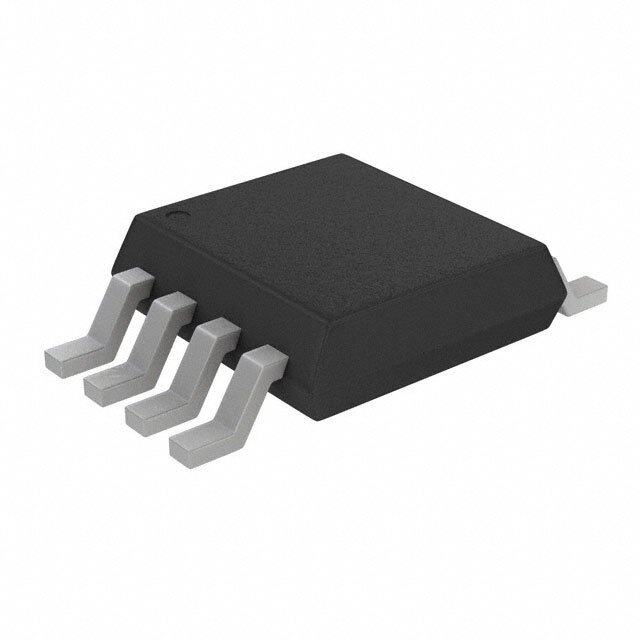
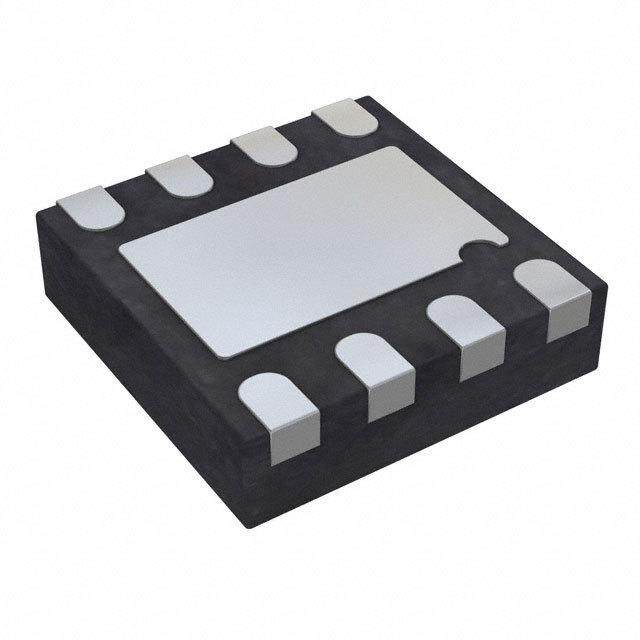


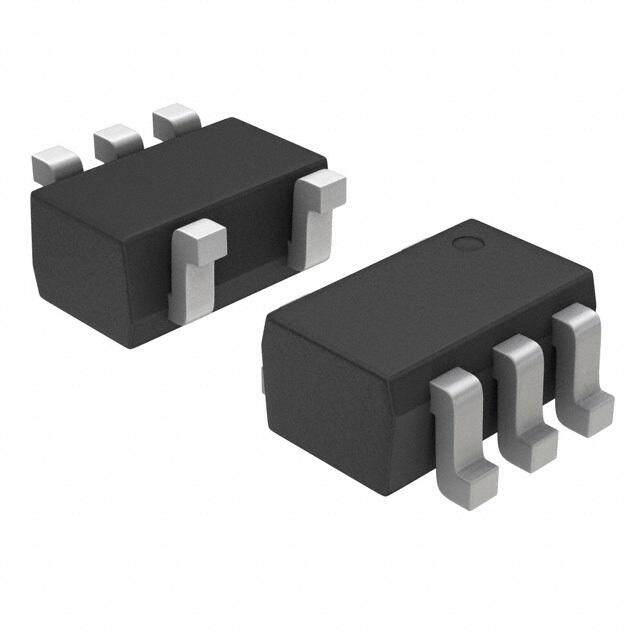

PDF Datasheet 数据手册内容提取
Product Sample & Technical Tools & Support & Folder Buy Documents Software Community TPS79801-Q1,TPS79850-Q1 SLVS822E–MARCH2009–REVISEDSEPTEMBER2015 TPS798xx-Q1 50 mA, 3 V to 50 V, Micropower, Low-Dropout Linear Regulator 1 Features 3 Description • QualifiedforAutomotiveApplications The TPS798xx-Q1 is the first device in a line of 50-V 1 high-voltage micropower low-dropout (LDO) linear • WideInputVoltageRange:3Vto50V regulators. This device is capable of supplying 50-mA • LowQuiescentCurrent:40 μA(Typical) output current with a dropout voltage of only 300 mV. • LowDropoutVoltage:300mV(Typical) Designed for low quiescent current high voltage (50 V) applications, 40 μA operating and 1 μA in • OutputCurrent:50mA shutdown makes the TPS798xx-Q1 an ideal choice • NoInputProtectionDiodesNeeded for battery-powered or high-voltage systems. • AdjustableOutputFrom1.275Vto28V Quiescentcurrentisalsowell-controlledindropout. • 1-μAQuiescentCurrentinShutdown Other features of the TPS798xx-Q1 include the ability • StableWith1-μFOutputCapacitor to operate with low equivalent series resistance (ESR) ceramic output capacitors. This device is • StableWithAluminum,Tantalum,orCeramic stable with only 1 μF on the output; most older Capacitors devices require from 10-μF to 100-μF tantalum • ReverseInput-BatteryProtection capacitors for stability. Small ceramic capacitors can • ReverseOutputCurrentFlowProtection be used without the necessary addition of ESR, as is common with other regulators. Internal protection • ThermalLimiting circuitry includes reverse input-battery protection, • Availableinan8-PinMSOP-PowerPADIC reverse output current protection, current limiting, and Package thermal limiting to protect the device in various fault conditions. 2 Applications This device is available in a fixed output voltage of 5 • Low-Current,High-VoltageRegulators V (TPS79850) and with an adjustable output voltage • RegulatorsforBattery-PoweredSystems with a 1.275-V reference voltage (TPS79801). The TPS798xx-Q1 regulator is available in a 8-pin MSOP- • Telecom PowerPAD (DGN) package with an exposed pad for • Automotives enhancedthermalmanagementcapability. DeviceInformation(1) PART PACKAGE BODYSIZE(NOM) NUMBER TPS79801-Q1 MSOP-PowerPAD(8) 3.00mm×3.00mm TPS79850-Q1 (1) For all available packages, see the orderable addendum at theendofthedatasheet. SimplifiedSchematic IN OUT V OUT R C 2 1 VIN TPS79801 EN FB GND R 1 V = 1.275 V (1 + R / R) + I R OUT 2 1 FB 2 V = 1.275 V FB I = 0.2 µAat 25°C FB Output Range = 1.275 V to 28 V 1 An IMPORTANT NOTICE at the end of this data sheet addresses availability, warranty, changes, use in safety-critical applications, intellectualpropertymattersandotherimportantdisclaimers.PRODUCTIONDATA.
TPS79801-Q1,TPS79850-Q1 SLVS822E–MARCH2009–REVISEDSEPTEMBER2015 www.ti.com Table of Contents 1 Features.................................................................. 1 7.4 DeviceFunctionalModes........................................12 2 Applications........................................................... 1 8 ApplicationandImplementation........................ 13 3 Description............................................................. 1 8.1 ApplicationInformation............................................13 4 RevisionHistory..................................................... 2 8.2 TypicalApplication .................................................13 5 PinConfigurationandFunctions......................... 3 9 PowerSupplyRecommendations...................... 15 9.1 ThermalConsiderations..........................................15 6 Specifications......................................................... 3 10 Layout................................................................... 15 6.1 AbsoluteMaximumRatings......................................3 6.2 ESDRatings..............................................................3 10.1 LayoutGuidelines.................................................15 6.3 RecommendedOperatingConditions.......................4 10.2 LayoutExample....................................................15 6.4 ThermalInformation..................................................4 10.3 ThermalConsiderations........................................15 6.5 ElectricalCharacteristics...........................................5 11 DeviceandDocumentationSupport................. 17 6.6 DissipationRatings ..................................................6 11.1 RelatedLinks........................................................17 6.7 TypicalCharacteristics..............................................7 11.2 CommunityResources..........................................17 7 DetailedDescription.............................................. 9 11.3 Trademarks...........................................................17 7.1 Overview...................................................................9 11.4 ElectrostaticDischargeCaution............................17 7.2 FunctionalBlockDiagram.........................................9 11.5 Glossary................................................................17 7.3 FeatureDescription.................................................10 12 Mechanical,Packaging,andOrderable Information........................................................... 17 4 Revision History NOTE:Pagenumbersforpreviousrevisionsmaydifferfrompagenumbersinthecurrentversion. ChangesfromRevisionD(August2011)toRevisionE Page • AddedPinConfigurationandFunctionssection,ESDRatingstable,FeatureDescriptionsection,DeviceFunctional Modes,ApplicationandImplementationsection,PowerSupplyRecommendationssection,Layoutsection,Device andDocumentationSupportsection,andMechanical,Packaging,andOrderableInformationsection .............................. 1 2 SubmitDocumentationFeedback Copyright©2009–2015,TexasInstrumentsIncorporated ProductFolderLinks:TPS79801-Q1 TPS79850-Q1
TPS79801-Q1,TPS79850-Q1 www.ti.com SLVS822E–MARCH2009–REVISEDSEPTEMBER2015 5 Pin Configuration and Functions DGNPackage 8-PinMSOPWithPowerPAD™ TopView OUT 1 8 IN SENSE/FB 2 7 NC NC 3 6 NC GND 4 5 EN Theexposedthermalpadisconnectedtogroundthroughpin4(GND). PinFunctions PIN I/O DESCRIPTION NAME NO. Enablepin.DrivingtheENpinhighturnsontheregulatoroverfulloperatingrange.Drivingthispin EN 5 I lowputstheregulatorintoshutdownmodeoverfulloperatingrange. Inputpin.TIrecommendsa0.1-μFceramicorgreatercapacitorfromthispintogroundtoassure IN 8 I stability.BothinputandoutputcapacitorgroundsshouldbetiedbacktotheICgroundwithno significantimpedancebetweenthem. GND 4 O Ground.Theexposedthermalpadisconnectedtogroundthroughthispin. Regulatedoutputvoltagepin.Asmall(1μF)capacitorisneededfromthispintogroundtoassure OUT 1 O stability. Thispinistheinputtothecontrollooperroramplifier;itisusedtosettheoutputvoltageofthe SENSE/FB 2 I device. NC 3,6,7 — Nointernalconnection 6 Specifications 6.1 Absolute Maximum Ratings overoperatingfree-airtemperaturerange(unlessotherwisenoted)(1) MIN MAX UNIT IN(2) –65 60 V OUT –0.3 28 V V Inputvoltagerange FB –0.3 7 V IN EN(2) –65 60 V EnabletoINdifferential 0.6 V V IN T Junctiontemperaturerange(3) –40 125 °C J T Storagetemperature –65 150 °C stg (1) StressesbeyondthoselistedunderAbsoluteMaximumRatingsmaycausepermanentdamagetothedevice.Thesearestressratings only,whichdonotimplyfunctionaloperationofthedeviceattheseoranyotherconditionsbeyondthoseindicatedunderRecommended OperatingConditions.Exposuretoabsolute-maximum-ratedconditionsforextendedperiodsmayaffectdevicereliability. (2) Transient:500msforV >50V IN (3) Thejunctiontemperaturemustnotexceed125ºC.SeeFigure1todeterminethemaximumambientoperatingtemperatureversusthe supplyvoltageandloadcurrent.Thesafeoperatingareacurvesassumea50ºC/Wthermalimpedanceandmayneedtobeadjustedto matchactualsystemthermalperformance. 6.2 ESD Ratings VALUE UNIT Humanbodymodel(HBM),perAECQ100-002(1) ±2000 V Electrostaticdischarge V (ESD) Chargeddevicemodel(CDM),perAECQ100-011 ±1000 (1) AECQ100-002indicatesHBMstressingisdoneinaccordancewiththeANSI/ESDA/JEDECJS-001specification. Copyright©2009–2015,TexasInstrumentsIncorporated SubmitDocumentationFeedback 3 ProductFolderLinks:TPS79801-Q1 TPS79850-Q1
TPS79801-Q1,TPS79850-Q1 SLVS822E–MARCH2009–REVISEDSEPTEMBER2015 www.ti.com 6.3 Recommended Operating Conditions MIN MAX UNIT IN –65 50 OUT –0.3 28 V Inputvoltage V IN FB –0.3 7 EN –65 50 I Outputcurrent 50 mA OUT T Operatingjunctiontemperature(1) (2) (3) –40 125 °C J T Ambientfree-airtemperature –40 105 °C A (1) Operatingconditionsarelimitedbymaximumjunctiontemperature.Theregulatedoutputvoltagespecificationdoesnotapplyforall possiblecombinationsofinputvoltageandoutputcurrent.Whenoperatingatmaximuminputvoltage,theoutputcurrentrangemustbe limited.Whenoperatingatmaximumoutputcurrent,theinputvoltagerangemustbelimited. (2) TheTPS798xx-Q1isspecifiedtomeetperformancespecificationsfrom–40°Cto125°Coperatingjunctiontemperature.Specifications overthefulloperatingjunctiontemperaturerangearespecifiedbydesign,characterization,andcorrelationwithstatisticalprocess controls. (3) Thisdeviceincludesovertemperatureprotectionthatisintendedtoprotectthedeviceduringmomentaryoverloadconditions.Junction temperatureexceeds125°C(minimum)whenovertemperatureprotectionisactive.Continuousoperationabovethespecifiedmaximum operatingjunctiontemperaturemayimpairdevicereliability. 6.4 Thermal Information TPS79801-Q1,TPS79850-Q1 THERMALMETRIC(1) DGN(MSOP-PowerPAD) UNIT 8PINS Junction-to-ambientthermalresistance(JEDEC51-5(2)) 57.1 °C/W R θJA Junction-to-ambientthermalresistance(JEDEC51-7(3)) 130 °C/W R Junction-to-case(top)thermalresistance 50.3 °C/W θJC(top) R Junction-to-boardthermalresistance 30.6 °C/W θJB ψ Junction-to-topcharacterizationparameter 1.5 °C/W JT ψ Junction-to-boardcharacterizationparameter 30.3 °C/W JB R Junction-to-case(bottom)thermalresistance 6.5 °C/W θJC(bot) (1) Formoreinformationabouttraditionalandnewthermalmetrics,seetheSemiconductorandICPackageThermalMetricsapplication report,SPRA953. (2) ThethermaldataisbasedonusingJEDEC51-5.Thecopperpadissolderedtothethermallandpatternandusing5by8thermalarray (vias).Correctattachmentproceduremustbeincorporated. (3) ThethermaldataisbasedonusingJEDEC51-7.Thecopperpadissolderedtothethermalland.Nothermalvias.Correctattachment proceduremustbeincorporated. 4 SubmitDocumentationFeedback Copyright©2009–2015,TexasInstrumentsIncorporated ProductFolderLinks:TPS79801-Q1 TPS79850-Q1
TPS79801-Q1,TPS79850-Q1 www.ti.com SLVS822E–MARCH2009–REVISEDSEPTEMBER2015 6.5 Electrical Characteristics V =V +1Vor4V(whicheverisgreaterforeitherfixedoradjustableversions),I =1mA,V =3V, IN OUT(NOM) LOAD EN C =C =2.2μF(unlessotherwisenoted).ForTPS79801,FBpintiedtoV .TypicalvaluesareatT =25°C. OUT IN OUT J PARAMETER TESTCONDITIONS TJ(1) MIN TYP MAX UNIT VIN Minimuminputvoltage ILOAD=50mA Fullrange 3 4 V Initialoutputvoltageaccuracy VIN=VOUTnom+0.5V 25°C –1.5% 1.5% FixedVOUT Outputvoltageaccuracyoverline, VIN=VOUTnom+1Vto50V, Fullrange –3% 3% load,andfulltemperaturerange ILOAD=1mAto50mA Initialoutputvoltageaccuracy VIN=3V 25°C 1.256 1.275 1.294 V AdjustableVOUT Outputvoltageaccuracyoverline, load,andfulltemperaturerange VIN=4Vto50V,ILOAD=1mAto50mA Fullrange 1.237 1.275 1.313 V Lineregulation,adjustableVOUT ΔVIN=3Vto50V 13 mV ΔVOUT/ΔVIN Fullrange Lineregulation,TPS79850 VIN=VOUTnom+0.5Vto50V 15 mV 25°C 20 Loadregulation,adjustableVOUT ΔILOAD=1mAto50mA mV Fullrange 32 ΔVOUT/ΔIOUT 25°C 50 Loadregulation,fixedVOUT ΔILOAD=1mAto50mA mV Fullrange 90 AdjustableVOUT Outputvoltagerange(2)(3) Fullrange 1.275 28 V 25°C 85 150 VIN=VOUT(NOM)–0.1V Fullrange 190 VDO Dropoutvoltage(4)(5) IVLIONA=D=VO1U0T(mNOAM,)–0.1V Fu2ll5r°aCnge 170 236500 mV ILOAD=50mA, 25°C 300 370 VIN=VOUT(NOM)–0.1V Fullrange 550 ILOAD=0mA Fullrange 30 80 IGND GNDpincurrent(6) VIN=VOUT(NOM) ILOAD=1mA Fullrange 100 180 μA ILOAD=10mA Fullrange 400 700 ILOAD=50mA Fullrange 1.8 3.3 mA COUT=10μF,ILOAD=50mA, VN Outputvoltagenoise BW=10Hzto100kHz,VIN=4.3V, 25°C 100 μVRMS VOUT=3.3V(adjustableused) IFB FBpinbiascurrent(7) VIN=3V 25°C 0.05 0.2 μA ENpinhigh(enabled)(8) OFFtoON,VIN=6V Fullrange 1.5 V VEN ENpinlow(shutdown)(8) ONtoOFF,VIN=6V 25°C 0.4V V ENpinlow(shutdown)(8) ONtoOFF,VIN=6V Fullrange 0.2V V IEN ENpincurrent(8) VEN=0VVIN=6V,ILOAD=0mA Fullrange 0.4 2 μA VEN=3V,VIN=6V,ILOAD=0mA Fullrange 0.4 0.5 Ishutdown GNDpincurrent(6) VIN=6V,VEN=0V,ILOAD=0mA Fullrange 3 25 μA PSRR Power-supplyrejectionratio VIN=4.3V,VOUT3.3-VVRIPPLE=0.5VPP, 25°C 65 dB fRIPPLE=120Hz,ILOAD=50mA Fixedcurrentlimit(9) ΔVOUT=VOUT(NOM)–0.1V Fullrange 60 200 mA ILIMIT Adjustablecurrentlimit ΔVOUT=VOUT(NOM)–0.1V Fullrange 60 200 mA (1) FullrangeT =–40°Cto125°C J (2) ThisparameteristestedandspecifiedunderpulseloadconditionssuchthatT =T .Thisdeviceis100%productiontestedat J A T =25°C.Performanceatfullrangeisspecifiedbydesign,characterization,benchtoATEcorrelationtesting,andotherstatistical A processcontrols. (3) ThisdeviceislimitedbyamaximumjunctiontemperatureofT =125°C.Theregulatedoutputvoltagespecificationcannotbeappliedto J allcombinationsofvariousV ,V ,ambienttemperature,andI conditions.Whenoperatingwithlargevoltagedifferentialsacross IN OUT OUT thedevice,theoutputloadmustbelimitedsoasnottoviolatethemaximumjunctiontemperatureforagivenambienttemperature. (4) Intheadjustableversiontest,theoutputusesanexternalvoltagedivider.ThisresistorvoltagedividerismadeupofR =215kΩand 1 R2(bottomresistor)=340kΩ.Thisconfigurationpreloadstheoutputwith6μA. (5) Bydefinition,dropoutvoltageistheminimuminputvoltageneededtomaintainagivenoutputvoltageataspecificloadcurrent.For dropouttesting,minimumV =V ×0.96.Thisspecificationensuresthatthedeviceisindropoutandtakesintoaccountthe IN OUT(NOM) outputvoltagetoleranceoverthefulltemperaturerange. (6) GroundpincurrentistestedwithV =V or3V,whicheverisgreater. IN OUT(NOM) (7) FBpincurrentflowsintotheFBpin. (8) ENpincurrentflowsintotheENpin. (9) CurrentlimitistestedwithV =V +0.5Vor3V,whicheverisgreater.V isforcedtoV –0.1Vandtheoutput IN OUT(NOM) OUT OUT(NOM) currentismeasured. Copyright©2009–2015,TexasInstrumentsIncorporated SubmitDocumentationFeedback 5 ProductFolderLinks:TPS79801-Q1 TPS79850-Q1
TPS79801-Q1,TPS79850-Q1 SLVS822E–MARCH2009–REVISEDSEPTEMBER2015 www.ti.com Electrical Characteristics (continued) V =V +1Vor4V(whicheverisgreaterforeitherfixedoradjustableversions),I =1mA,V =3V, IN OUT(NOM) LOAD EN C =C =2.2μF(unlessotherwisenoted).ForTPS79801,FBpintiedtoV .TypicalvaluesareatT =25°C. OUT IN OUT J PARAMETER TESTCONDITIONS TJ(1) MIN TYP MAX UNIT Inputreverseleakage IRL current(reversebatterytest) VIN=–60V,VOUT=open,CINopen Fullrange 6 mA IRO Reverseoutputcurrent(10) VOUT=VOUT(NOM),VIN=ground 25°C 19 25 μA Thermalshutdowntemperature Shutdown,temperatureincreasing 135 TSD (TJ)(11) Reset,temperaturedecreasing 135 °C (10) ReverseoutputcurrentistestedwiththeINpintiedtogroundandtheoutputforcedtoV +0.1V.Thiscurrentflowsintothe OUT(NOM) OUTpinandoutoftheGNDpinandthenmeasured. (11) Specifiedbydesign 120 DC Transient Operation (<500ms) 100 I =5mA OUT C –° 80 e r u at r pe 60 m IOUT=30mA e T – TA 40 V =5V OUT 20 T =125°C J(max) 0 =50°C/W JA I =50mA OUT 0 10 20 30 40 50 60 V –InputVoltage–V IN Figure1. SafeOperatingArea 6.6 Dissipation Ratings(1) DERATINGFACTOR T ≤25°C T =70°C T =85°C BOARD PACKAGE A A A ABOVET =25°C POWERRATING POWERRATING POWERRATING A High-K(2) DGN 16.6mW/°C 1.83W 1.08W 0.833W (1) SeeThermalConsiderationsformoreinformationrelatedtothermaldesign. (2) TheJEDECHigh-K(1s)boarddesignusedtoderivethisdatawasa4.5-inch×3-inch,2-layerboardwith2-ouncecoppertracesontop oftheboard. 6 SubmitDocumentationFeedback Copyright©2009–2015,TexasInstrumentsIncorporated ProductFolderLinks:TPS79801-Q1 TPS79850-Q1
TPS79801-Q1,TPS79850-Q1 www.ti.com SLVS822E–MARCH2009–REVISEDSEPTEMBER2015 6.7 Typical Characteristics 2.5 2 2 TA=85°C 1.5 TA=-40°C –mV TA=25°C –mV 1 TA=85°C on1.5 on ulati ulati0.5 Reg TA=-40°C Reg e 1 e n n Li Li 0 TA=25°C TPS79801 0.5 VEN=2V -0.5 TPS79850 VOUT(nom)=1.275V VEN=VIN IOUT=1mA IOUT=1mA 0 -1 0 10 20 30 40 50 0 10 20 30 40 50 VIN–InputVoltage–V VIN–InputVoltage–V Figure2.LineRegulationvsInputVoltage Figure3.LineRegulationvsInputVoltage 350 400 TPS79801 TA=85°C TPS79850 TA=85°C V300 VVEONUT=(no2m)V=3.3V TA=25°C V350 VVIENN==4V.9INV TA=25°C m m300 –250 – oltage200 TA=-40°C oltage250 TA=-40°C V V ut ut200 o o op150 op Dr Dr150 – – Vdo100 VDO 100 50 50 0 0 0 0.01 0.02 0.03 0.04 0.05 0.06 0 0.01 0.02 0.03 0.04 0.05 0.06 IOUT–OutputCurrent–A IOUT–OutputCurrent–A Figure4.DropoutVoltagevsOutputCurrent Figure5.DropoutVoltagevsOutputCurrent 50 50 VEN=VIN 45 45 A40 VEN=VIN A40 µ µ urrent–3305 TPS79801 urrent–3305 C C TPS79850 uiescent2205 VVIOIOUNUT=T=(n6o0mV)m=A1.275V uiescent2205 VIOIUNT==60VmA Q Q I–Q15 I–Q15 10 10 5 VEN=0V 5 VEN=0V 0 0 -40 -20 0 20 40 60 80 100 -40 -20 0 20 40 60 80 100 TA–Temperature–°C TA–Temperature–°C Figure6.QuiescentCurrentvsTemperature Figure7.QuiescentCurrentvsTemperature Copyright©2009–2015,TexasInstrumentsIncorporated SubmitDocumentationFeedback 7 ProductFolderLinks:TPS79801-Q1 TPS79850-Q1
TPS79801-Q1,TPS79850-Q1 SLVS822E–MARCH2009–REVISEDSEPTEMBER2015 www.ti.com Typical Characteristics (continued) 60 60 50 TA=-40°C 50 TA=25°C TA=-40°C A A µ µ – – Current40 TA=85°C TA=25°C Current40 TA=85°C escent30 escent30 ui ui –Q20 –Q20 IQ TPS79801 IQ TPS79850 10 VVIOEOUNUTT==(no06m)mV=A1.275V 10 VIOEUNT==06mVA 0 0 0 10 20 30 40 50 0 10 20 30 40 50 VIN–InputVoltage–V VIN–InputVoltage–V Figure8.QuiescentCurrentvsInputVoltage Figure9.QuiescentCurrentvsInputVoltage 1800 1800 TPS79801 TPS79850 1600 VIN=7V 1600 VIN=6V Current–µA111024000000 VVTAEONU=T=(n2oV5m°)INC=5V Current–µA 111024000000 VTAEN==2V5°INC Quiescent 680000 Quiescent 680000 – – IQ 400 IQ 400 200 200 0 0 0 0.01 0.02 0.03 0.04 0.05 0 0.01 0.02 0.03 0.04 0.05 IOUT–OutputCurrent–A IOUT–OutputCurrent–A Figure10.QuiescentCurrentvsOutputCurrent Figure11.QuiescentCurrentvsOutputCurrent 100 90 80 VIN=7VDC+20 mVp-pAC 70 VIN=6VDC+20 mVp-pAC B 60 d – R 50 R S P 40 TPS79850 30 VEN=VIN 20 IOUT=50mA TA=25°C VIN=5.5VDC+20 mVp-pAC 10 CIN=Open COUT=10µF 0 1.E1+001 1.1E0+002 1.E1+k03 1.1E0+k04 11.E0+00k5 1.E1+M06 11.E0+M07 Frequency–Hz Figure12.ReverseBatteryLeakagevsInputVoltage Figure13.PowerSupplyRippleRejectionvsFrequency 8 SubmitDocumentationFeedback Copyright©2009–2015,TexasInstrumentsIncorporated ProductFolderLinks:TPS79801-Q1 TPS79850-Q1
TPS79801-Q1,TPS79850-Q1 www.ti.com SLVS822E–MARCH2009–REVISEDSEPTEMBER2015 7 Detailed Description 7.1 Overview The TPS798xx-Q1 is a 50-mA high-voltage LDO regulator with micropower quiescent current and shutdown. The device is capable of supplying 50 mA at a dropout voltage of 300 mV (typical). The low operating quiescent current (40 μA) drops to 1 μA in shutdown. In addition to the low quiescent current, the TPS798xx-Q1 incorporatesseveralprotectionfeaturesthatmakeitidealforbattery-poweredapplications. The device is protected against both reverse-input and reverse-output voltages. In battery-backup applications, where the output can be held up by a backup battery when the input is pulled to ground, the TPS798xx-Q1 acts as if it has a diode in series with its output and prevents reverse current flow. Figure 14 and Figure 15 illustrate twotypicalapplications. RETURN IN OUT 1mF TPS79801 1mF OFF ON EN FB GND R SET -48V I =1.275V/R LED SET –48Vcanvaryfrom–4Vto–50V Figure14. ConstantBrightnessforIndicatorLEDOverWideInputVoltageRange R P IN OUT TPS79801 VIN EN FB Load GND Figure15. KelvinSenseConnection 7.2 Functional Block Diagram IN OUT Current Thermal SENSE Limit Shutdown Internal Supply EN Bandgap GND Figure16. FixedVoltageOutputVersion Copyright©2009–2015,TexasInstrumentsIncorporated SubmitDocumentationFeedback 9 ProductFolderLinks:TPS79801-Q1 TPS79850-Q1
TPS79801-Q1,TPS79850-Q1 SLVS822E–MARCH2009–REVISEDSEPTEMBER2015 www.ti.com Functional Block Diagram (continued) IN OUT Current Thermal Limit Shutdown Internal Supply EN Bandgap FB GND Figure17. AdjustableVoltageOutputVersion 7.3 Feature Description 7.3.1 AdjustableOperation The TPS798xx-Q1 has an output voltage range of 1.275 V to 28 V. The output voltage is set by the ratio of two external resistors as shown in Figure 18. The feedback loop monitors the output to maintain the voltage at the adjustpinat1.275Vreferencedtoground.ThecurrentinR isthenequalto1.275V/R ,andthecurrentinR is 1 1 2 the current in R plus the FB pin bias current. The FB pin bias current, 0.2 μA at 25°C, flows through R into the 1 2 FB pin. The output voltage can be calculated using the formula in Figure 18. The value of R should be less than 1 250 kΩ to minimize errors in the output voltage caused by the FB pin bias current. Note that in shutdown, the outputisturnedoffandthedividercurrentiszero. IN OUT V OUT R C 2 1 VIN TPS79801 EN FB GND R 1 V = 1.275 V (1 + R / R) + I R OUT 2 1 FB 2 V = 1.275 V FB I = 0.2 µAat 25°C FB Output Range = 1.275 V to 28 V Figure18. AdjustableOperation A 100-pF capacitor (C ) placed in parallel with the top resistor (R ) of the output divider is necessary for stability 1 2 and transient performance of the adjustable TPS798xx-Q1. The impedance of C at 10 kHz should be less than 1 thevalueofR . 2 The adjustable device is tested and specified with the FB pin tied to the OUT pin and a 1 mA-DC load (unless otherwise specified) for an output voltage of 1.275 V. Specifications for output voltages greater than 1.275 V are proportional to the ratio of the desired output voltage to 1.275 V (V /1.275 V). For example, load regulation for OUT anoutputcurrentchangeof1mAto50mAis –10mV(typical)atV =1.275V. OUT AtV =12V,loadregulationis: OUT (12V/1.275V)×(–10mV)=–94mV (1) 10 SubmitDocumentationFeedback Copyright©2009–2015,TexasInstrumentsIncorporated ProductFolderLinks:TPS79801-Q1 TPS79850-Q1
TPS79801-Q1,TPS79850-Q1 www.ti.com SLVS822E–MARCH2009–REVISEDSEPTEMBER2015 Feature Description (continued) 7.3.2 OutputCapacitanceandTransientResponse The TPS798xx-Q1 is designed to be stable with a wide range of output capacitors. The ESR of the output capacitor affects stability, most notably with small capacitors. To prevent oscillations, TI recommends a minimum output capacitor of 1 μF with an ESR of 3 Ω or less. The TPS798xx-Q1 is a micropower device, and output transient response is a function of output capacitance. Larger values of output capacitance decrease the peak deviations and provide improved transient response for larger load current changes. Bypass capacitors, used to decoupleindividualcomponentspoweredbytheTPS798xx-Q1,increasetheeffectiveoutputcapacitorvalue. Extra consideration must be given to the use of ceramic capacitors. Ceramic capacitors are manufactured with a variety of dielectrics, each with different behavior over temperature and applied voltage. The most common dielectrics used are Z5U, Y5 V, X5R, and X7R. The Z5U and Y5 V dielectrics are good for providing high capacitances in a small package, but exhibit strong voltage and temperature coefficients. When used with a 5 V regulator, a 10-μF Y5 V capacitor can exhibit an effective value as low as 1 μF to 2 μF over the operating temperature range. The X5R and X7R dielectrics result in more stable characteristics and are more suitable for use as the output capacitor. The X7R type has better stability across temperature, while the X5R is less expensiveandisavailableinhighervalues. Voltage and temperature coefficients are not the only sources of problems. Some ceramic capacitors have a piezoelectric response. A piezoelectric device generates voltage across its terminals because of mechanical stress, similar to the way a piezoelectric accelerometer or microphone works. For a ceramic capacitor, the stress canbeinducedbyvibrationsinthesystemorthermaltransients. 7.3.3 CalculatingJunctionTemperature Given an output voltage of 5 V, an input voltage range of 15 V to 24 V, an output current range of 0 mA to 50 mA, and a maximum ambient temperature of 50°C, the maximum junction temperature is calculated as follows. Thepowerdissipated(P )bytheDGNpackageisequalto: DISS I (V –V )+I (V ) OUT(MAX) IN(MAX) OUT GND IN(MAX) where • I =50mA OUT(MAX) • V =24V IN(MAX) • V =5V OUT • I at(I =50mA,V =24V)=1mA (2) GND OUT IN Therefore, P =50mA(24V–5V)+1mA(24V)=0.974W (3) DISS The thermal resistance is approximately 60°C/W, based on JEDEC 51-5 profile. Therefore, the junction temperatureriseaboveambientisapproximatelyequalto: 0.974W×60°C/W=58.44°C (4) The maximum junction temperature is then equal to the maximum junction temperature rise above ambient plus themaximumambienttemperatureor: T max=50°C+58.44°C=108.44°C (5) J 7.3.4 ProtectionFeatures The TPS798xx-Q1 incorporates several protection features that make it ideal for use in battery-powered circuits. In addition to the normal protection features associated with monolithic regulators, such as current limiting and thermallimiting,thedeviceisprotectedagainstreverse-inputvoltages,andreversecurrentsfromoutputtoinput. Current limit protection and thermal-overload protection are intended to protect the device against current overloadconditionsattheoutputofthedevice.Thejunctiontemperatureshouldnotexceed125°C. The input of the device withstands reverse voltages of –60 V. Current flow into the device is limited to less than 6 mA (typically, less than 100 μA), and no negative voltage appears at the output. The device protects both itself andtheload.Thisarchitecturealsoprovidesprotectionagainstbatteriesthatmaybepluggedinbackwards. Copyright©2009–2015,TexasInstrumentsIncorporated SubmitDocumentationFeedback 11 ProductFolderLinks:TPS79801-Q1 TPS79850-Q1
TPS79801-Q1,TPS79850-Q1 SLVS822E–MARCH2009–REVISEDSEPTEMBER2015 www.ti.com Feature Description (continued) The FB pin of the adjustable device can be pulled above or below ground by as much as 7 V without damaging the device. If the input is left open or grounded, the FB pin behaves as an open circuit when pulled below ground, or as a large resistor (typically, 100 kΩ) in series with a diode when pulled above ground. If the input is powered by a voltage source, pulling the FB pin below the reference voltage increases the output voltage. This configuration causes the output to go to a unregulated high voltage. Pulling the FB pin above the reference voltageturnsoffalloutputcurrent. In situations where the FB pin is connected to a resistor divider that would pull the FB pin above its 7-V clamp voltage if the output is pulled high, the FB pin input current must be limited to less than 5 mA. For example, a resistor divider provides a regulated 1.5-V output from the 1.275-V reference when the output is forced to 28 V. The top resistor of the resistor divider must be chosen to limit the current into the FB pin to less than 5 mA when the FB pin is at 7 V. The 21-V difference between the OUT and FB pins divided by the 5-mA maximum current intotheFBpinyieldsaminimumtopresistorvalueof5.8kΩ. In circuits where a backup battery is required, several different input/output conditions can occur. The output voltage may be held up while the input is either pulled to ground, pulled to some intermediate voltage, or is left open. The rise in reverse output current above 7 V occurs from the breakdown of the 7-V clamp on the FB pin. With a resistor divider on the regulator output, this current is reduced, depending on the size of the resistor divider. When the IN pin of the TPS798xx-Q1 is forced below the OUT pin, or the OUT pin is pulled above the IN pin, input current typically drops to less than 0.6 mA. This scenario can occur if the input of the TPS798xx-Q1 is connected to a discharged (low voltage) battery and the output is held up by either a backup battery or a second regulator circuit. The state of the EN pin has no effect on the reverse output current when the output is pulled abovetheinput. 7.4 Device Functional Modes 7.4.1 Low-VoltageTracking At low input voltages, the regulator drops out of regulation and the output voltage tracks input minus a voltage based on the load current and switch resistance. This allows for a smaller input capacitor and can possibly eliminatetheneedofusingaboostconvertorduringcold-crankconditions. 12 SubmitDocumentationFeedback Copyright©2009–2015,TexasInstrumentsIncorporated ProductFolderLinks:TPS79801-Q1 TPS79850-Q1
TPS79801-Q1,TPS79850-Q1 www.ti.com SLVS822E–MARCH2009–REVISEDSEPTEMBER2015 8 Application and Implementation NOTE Information in the following applications sections is not part of the TI component specification, and TI does not warrant its accuracy or completeness. TI’s customers are responsible for determining suitability of components for their purposes. Customers should validateandtesttheirdesignimplementationtoconfirmsystemfunctionality. 8.1 Application Information Figure 19 shows typical application circuits for the TPS79801-Q1 device. Based on the end-application, different valuesofexternalcomponentscanbeused. 8.2 Typical Application IN OUT V OUT R C 2 1 VIN TPS79801 EN FB GND R 1 V = 1.275 V (1 + R / R) + I R OUT 2 1 FB 2 V = 1.275 V FB I = 0.2 µAat 25°C FB Output Range = 1.275 V to 28 V Figure19. AdjustableOperationExample 8.2.1 DesignRequirements Table1liststhedesignparametersforthisexample. Table1.DesignParameters DESIGNPARAMETER EXAMPLEVALUE Inputvoltagerange 3Vto50V Outputvoltage 5V Outputcurrentrating 50mA Outputcapacitorrange 1µFto100µF 8.2.2 DetailedDesignProcedure Tobeginthedesignprocess,determinethefollowing: 1. Inputvoltagerange 2. Outputvoltage 3. Outputcurrentrating 4. Outputcapacitor Copyright©2009–2015,TexasInstrumentsIncorporated SubmitDocumentationFeedback 13 ProductFolderLinks:TPS79801-Q1 TPS79850-Q1
TPS79801-Q1,TPS79850-Q1 SLVS822E–MARCH2009–REVISEDSEPTEMBER2015 www.ti.com 8.2.3 ApplicationCurves Figure20.CH1:Vin,CH2:VoutPower-UpWaveform Figure21.CH1:Vin,CH2:VoutPower-DownWaveform (Load=50mA) (Load=50mA) 14 SubmitDocumentationFeedback Copyright©2009–2015,TexasInstrumentsIncorporated ProductFolderLinks:TPS79801-Q1 TPS79850-Q1
TPS79801-Q1,TPS79850-Q1 www.ti.com SLVS822E–MARCH2009–REVISEDSEPTEMBER2015 9 Power Supply Recommendations 9.1 Thermal Considerations The power handling capability of the device is limited by the maximum rated junction temperature (125°C). The powerdissipatedbythedeviceconsistsoftwocomponents: • Outputcurrentmultipliedbytheinput/outputvoltagedifferential:I ×(V – V ) OUT IN OUT • GNDpincurrentmultipliedbytheinputvoltage:I ×V GND IN The GND pin current can be found by examining the GND pin current curves in the Typical Characteristics. Powerdissipationisequaltothesumofthetwocomponentslistedpreviously. The TPS798xx-Q1 series regulators have internal thermal limiting designed to protect the device during overload conditions. Do not exceed the maximum junction temperature rating of 125°C. It is important to carefully consider all sources of thermal resistance from junction to ambient. Additional heat sources mounted nearby must also be considered. For surface-mount devices, heat sinking is accomplished by using the heat-spreading capabilities of the printed- circuit-board (PCB) and its copper traces. Copper board stiffeners and plated through-holes can also be used to spreadtheheatgeneratedbypowerdevices. 10 Layout 10.1 Layout Guidelines • Do not place any of the capacitors on the opposite side of the PCB from where the regulator is installed. TI strongly discourages using vias and long traces because of the negative impact on system performance. Vias andlongtracescanalsocauseinstability. • Equivalent series inductance (ESL) and ESR must be minimized to maximize performance and ensure stability. Every capacitor must be placed as close to the device as possible and on the same side of the PCB astheregulator. 10.2 Layout Example OUT 081 Vin OUT IN Input bypass capacitor Outputfilter SENSE/FB NC capacitor GND NC NC GND GND EN 10.3 Thermal Considerations The amount of heat that an LDO linear regulator generates is directly proportional to the amount of power it dissipates during operation. All integrated circuits have a maximum allowable junction temperature (T max) J abovewhichnormaloperationisnotassured.Theoperatingenvironmentmustbedesignedsothattheoperating junction temperature (T ) does not exceed the maximum junction temperature (T max). The two primary J J environmental variables that can be used to improve thermal performance are air flow and external heatsinks. The purpose of this section is to help the designer to determine the proper operating environment for a linear regulatorthatoperatesataspecificpowerlevel. Copyright©2009–2015,TexasInstrumentsIncorporated SubmitDocumentationFeedback 15 ProductFolderLinks:TPS79801-Q1 TPS79850-Q1
TPS79801-Q1,TPS79850-Q1 SLVS822E–MARCH2009–REVISEDSEPTEMBER2015 www.ti.com Thermal Considerations (continued) In general, the maximum expected power (P max) consumed by a linear regulator is computed as shown in D Equation6: P max=(V –V )×I +V ×I D IN(avg) OUT(avg) OUT(avg) I(avg) Q where • V istheaverageinputvoltage. IN(avg) • V istheaverageoutputvoltage. OUT(avg) • I istheaverageoutputcurrent. OUT(avg) • I isthequiescentcurrent. (6) Q For most TI LDO regulators, the quiescent current is insignificant compared to the average output current; therefore, the term V × I can be ignored. The operating junction temperature is computed by adding the IN(avg) Q ambient temperature (T ) and the increase in temperature as a result of the regulator power dissipation. The A temperature rise is computed by multiplying the maximum expected power dissipation by the sum of the thermal resistances between the junction and the case (R ), the case to heatsink (R ), and the heatsink to ambient θJC θCS (R ). Thermal resistances are measurements of how effectively an object dissipates heat. Typically, the larger θSA thedevice,themoresurfaceareaavailableforpowerdissipationandthelowerthedevicethermalresistance. 1.2 JEDEC 51-5 1 W) 0.8 n ( o ati p si 0.6 s Di r e w o 0.4 P 0.2 0 0 20 40 60 80 100 120 140 160 Temperature (°C) Figure22. PowerDissipationvsTemperature 16 SubmitDocumentationFeedback Copyright©2009–2015,TexasInstrumentsIncorporated ProductFolderLinks:TPS79801-Q1 TPS79850-Q1
TPS79801-Q1,TPS79850-Q1 www.ti.com SLVS822E–MARCH2009–REVISEDSEPTEMBER2015 11 Device and Documentation Support 11.1 Related Links The following table lists quick access links. Categories include technical documents, support and community resources,toolsandsoftware,andquickaccesstosampleorbuy. Table2.RelatedLinks TECHNICAL TOOLS& SUPPORT& PARTS PRODUCTFOLDER SAMPLE&BUY DOCUMENTS SOFTWARE COMMUNITY TPS79801-Q1 Clickhere Clickhere Clickhere Clickhere Clickhere TPS79850-Q1 Clickhere Clickhere Clickhere Clickhere Clickhere 11.2 Community Resources The following links connect to TI community resources. Linked contents are provided "AS IS" by the respective contributors. They do not constitute TI specifications and do not necessarily reflect TI's views; see TI's Terms of Use. TIE2E™OnlineCommunity TI'sEngineer-to-Engineer(E2E)Community.Createdtofostercollaboration amongengineers.Ate2e.ti.com,youcanaskquestions,shareknowledge,exploreideasandhelp solveproblemswithfellowengineers. DesignSupport TI'sDesignSupport QuicklyfindhelpfulE2Eforumsalongwithdesignsupporttoolsand contactinformationfortechnicalsupport. 11.3 Trademarks PowerPAD,E2EaretrademarksofTexasInstruments. Allothertrademarksarethepropertyoftheirrespectiveowners. 11.4 Electrostatic Discharge Caution Thesedeviceshavelimitedbuilt-inESDprotection.Theleadsshouldbeshortedtogetherorthedeviceplacedinconductivefoam duringstorageorhandlingtopreventelectrostaticdamagetotheMOSgates. 11.5 Glossary SLYZ022—TIGlossary. Thisglossarylistsandexplainsterms,acronyms,anddefinitions. 12 Mechanical, Packaging, and Orderable Information The following pages include mechanical, packaging, and orderable information. This information is the most current data available for the designated devices. This data is subject to change without notice and revision of thisdocument.Forbrowser-basedversionsofthisdatasheet,refertotheleft-handnavigation. Copyright©2009–2015,TexasInstrumentsIncorporated SubmitDocumentationFeedback 17 ProductFolderLinks:TPS79801-Q1 TPS79850-Q1
PACKAGE OPTION ADDENDUM www.ti.com 6-Feb-2020 PACKAGING INFORMATION Orderable Device Status Package Type Package Pins Package Eco Plan Lead/Ball Finish MSL Peak Temp Op Temp (°C) Device Marking Samples (1) Drawing Qty (2) (6) (3) (4/5) TPS79801QDGNRQ1 ACTIVE HVSSOP DGN 8 2500 Green (RoHS NIPDAUAG Level-2-260C-1 YEAR -40 to 125 PMRQ & no Sb/Br) TPS79850QDGNRQ1 ACTIVE HVSSOP DGN 8 2500 Green (RoHS NIPDAUAG Level-2-260C-1 YEAR -40 to 125 OOLQ & no Sb/Br) (1) The marketing status values are defined as follows: ACTIVE: Product device recommended for new designs. LIFEBUY: TI has announced that the device will be discontinued, and a lifetime-buy period is in effect. NRND: Not recommended for new designs. Device is in production to support existing customers, but TI does not recommend using this part in a new design. PREVIEW: Device has been announced but is not in production. Samples may or may not be available. OBSOLETE: TI has discontinued the production of the device. (2) RoHS: TI defines "RoHS" to mean semiconductor products that are compliant with the current EU RoHS requirements for all 10 RoHS substances, including the requirement that RoHS substance do not exceed 0.1% by weight in homogeneous materials. Where designed to be soldered at high temperatures, "RoHS" products are suitable for use in specified lead-free processes. TI may reference these types of products as "Pb-Free". RoHS Exempt: TI defines "RoHS Exempt" to mean products that contain lead but are compliant with EU RoHS pursuant to a specific EU RoHS exemption. Green: TI defines "Green" to mean the content of Chlorine (Cl) and Bromine (Br) based flame retardants meet JS709B low halogen requirements of <=1000ppm threshold. Antimony trioxide based flame retardants must also meet the <=1000ppm threshold requirement. (3) MSL, Peak Temp. - The Moisture Sensitivity Level rating according to the JEDEC industry standard classifications, and peak solder temperature. (4) There may be additional marking, which relates to the logo, the lot trace code information, or the environmental category on the device. (5) Multiple Device Markings will be inside parentheses. Only one Device Marking contained in parentheses and separated by a "~" will appear on a device. If a line is indented then it is a continuation of the previous line and the two combined represent the entire Device Marking for that device. (6) Lead/Ball Finish - Orderable Devices may have multiple material finish options. Finish options are separated by a vertical ruled line. Lead/Ball Finish values may wrap to two lines if the finish value exceeds the maximum column width. Important Information and Disclaimer:The information provided on this page represents TI's knowledge and belief as of the date that it is provided. TI bases its knowledge and belief on information provided by third parties, and makes no representation or warranty as to the accuracy of such information. Efforts are underway to better integrate information from third parties. TI has taken and continues to take reasonable steps to provide representative and accurate information but may not have conducted destructive testing or chemical analysis on incoming materials and chemicals. TI and TI suppliers consider certain information to be proprietary, and thus CAS numbers and other limited information may not be available for release. In no event shall TI's liability arising out of such information exceed the total purchase price of the TI part(s) at issue in this document sold by TI to Customer on an annual basis. Addendum-Page 1
PACKAGE OPTION ADDENDUM www.ti.com 6-Feb-2020 Addendum-Page 2
PACKAGE MATERIALS INFORMATION www.ti.com 6-Sep-2019 TAPE AND REEL INFORMATION *Alldimensionsarenominal Device Package Package Pins SPQ Reel Reel A0 B0 K0 P1 W Pin1 Type Drawing Diameter Width (mm) (mm) (mm) (mm) (mm) Quadrant (mm) W1(mm) TPS79801QDGNRQ1 HVSSOP DGN 8 2500 330.0 12.4 5.3 3.3 1.3 8.0 12.0 Q1 TPS79850QDGNRQ1 HVSSOP DGN 8 2500 330.0 12.4 5.3 3.3 1.3 8.0 12.0 Q1 PackMaterials-Page1
PACKAGE MATERIALS INFORMATION www.ti.com 6-Sep-2019 *Alldimensionsarenominal Device PackageType PackageDrawing Pins SPQ Length(mm) Width(mm) Height(mm) TPS79801QDGNRQ1 HVSSOP DGN 8 2500 370.0 355.0 55.0 TPS79850QDGNRQ1 HVSSOP DGN 8 2500 370.0 355.0 55.0 PackMaterials-Page2
None
IMPORTANTNOTICEANDDISCLAIMER TI PROVIDES TECHNICAL AND RELIABILITY DATA (INCLUDING DATASHEETS), DESIGN RESOURCES (INCLUDING REFERENCE DESIGNS), APPLICATION OR OTHER DESIGN ADVICE, WEB TOOLS, SAFETY INFORMATION, AND OTHER RESOURCES “AS IS” AND WITH ALL FAULTS, AND DISCLAIMS ALL WARRANTIES, EXPRESS AND IMPLIED, INCLUDING WITHOUT LIMITATION ANY IMPLIED WARRANTIES OF MERCHANTABILITY, FITNESS FOR A PARTICULAR PURPOSE OR NON-INFRINGEMENT OF THIRD PARTY INTELLECTUAL PROPERTY RIGHTS. These resources are intended for skilled developers designing with TI products. You are solely responsible for (1) selecting the appropriate TI products for your application, (2) designing, validating and testing your application, and (3) ensuring your application meets applicable standards, and any other safety, security, or other requirements. These resources are subject to change without notice. TI grants you permission to use these resources only for development of an application that uses the TI products described in the resource. Other reproduction and display of these resources is prohibited. No license is granted to any other TI intellectual property right or to any third party intellectual property right. TI disclaims responsibility for, and you will fully indemnify TI and its representatives against, any claims, damages, costs, losses, and liabilities arising out of your use of these resources. TI’s products are provided subject to TI’s Terms of Sale (www.ti.com/legal/termsofsale.html) or other applicable terms available either on ti.com or provided in conjunction with such TI products. TI’s provision of these resources does not expand or otherwise alter TI’s applicable warranties or warranty disclaimers for TI products. Mailing Address: Texas Instruments, Post Office Box 655303, Dallas, Texas 75265 Copyright © 2020, Texas Instruments Incorporated
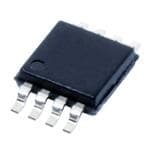
 Datasheet下载
Datasheet下载

